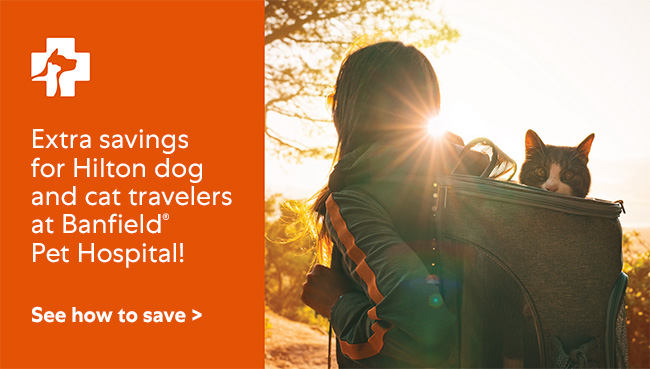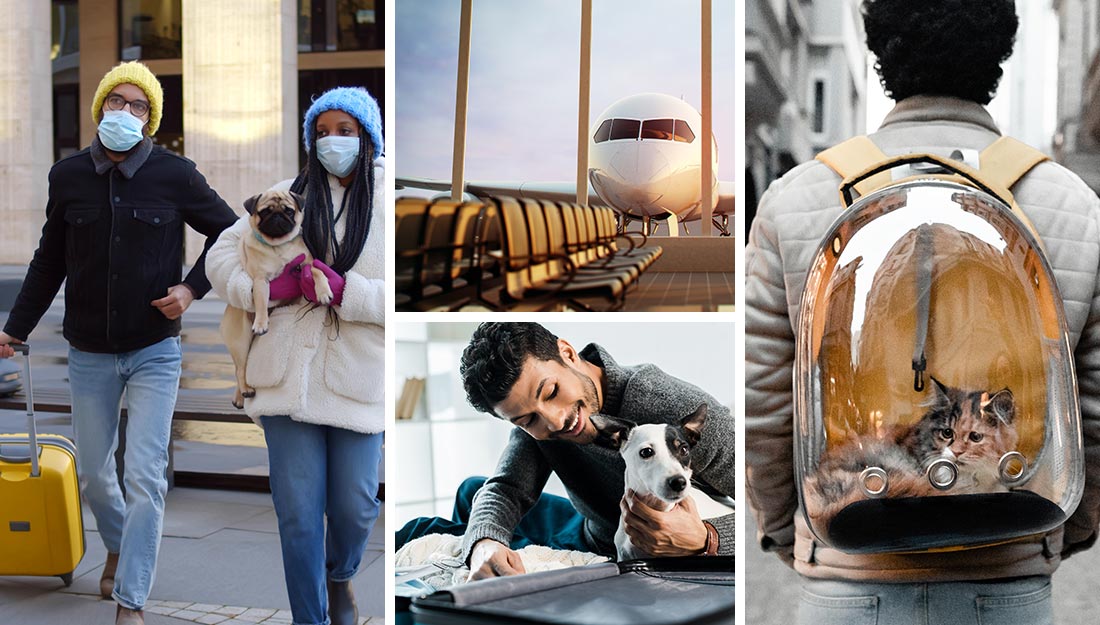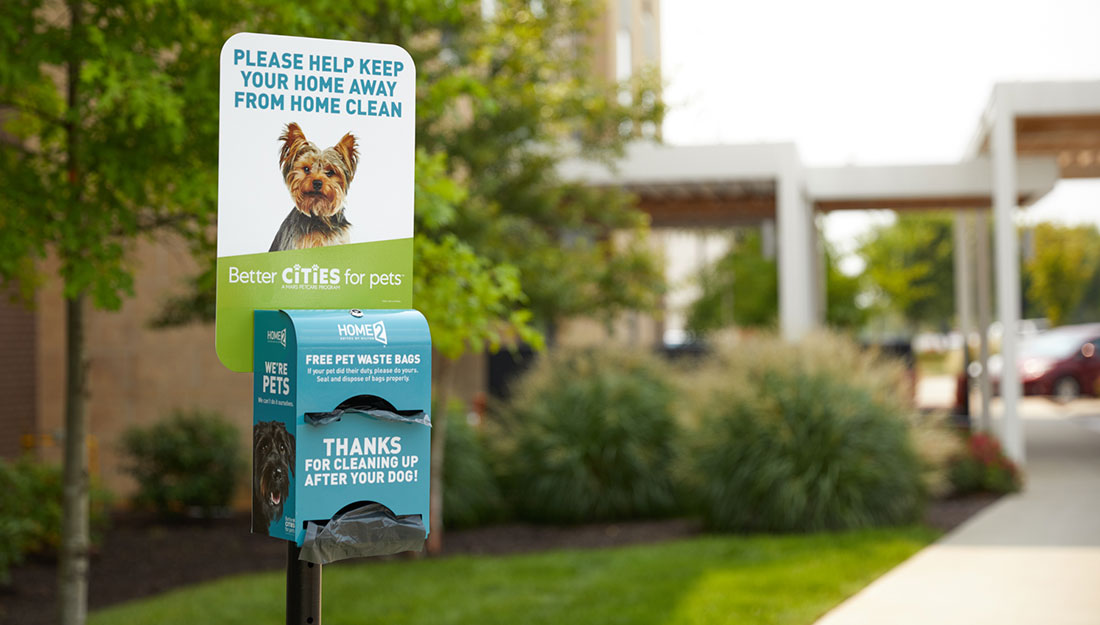Top tips on traveling with your dog or cat
Since many of us enjoy spending time with our pets, it’s only natural to want to bring them on our adventures. Traveling with your furry companion can be fun and exciting! If you’re confident that your pet is ready for the adventure of leaving home and traveling by plane, train, or car, here are some things to keep in mind.
1. Talk to your veterinary team before your trip
It’s smart to call your vet as soon as you know your travel plans to make sure you’re covering all the bases.
Even if you think your pet will do just fine on your trip, they may still need a health certificate to travel. This certificate is signed by your vet and states your pet isn’t sick or contagious. You need this form even for domestic travel from state to state, so don’t wait until the last minute to get your pet’s forms in order.
Other good ideas when you talk to your vet: Get a copy of your pet’s medical record, just in case anything happens while you’re on the road. Ask your veterinary team about the best ways to stay up to date on your pet’s medications during your trip. If you’re concerned about motion sickness or anxiety, tell your vet so you can discuss the options they recommend.
2. Get set with basic cat and dog travel supplies
Planes, trains, automobiles — no matter how you’re traveling, you’ll need a travel bag for your pet. Having your pet’s supplies can help remove unnecessary stress for both you and your pet.
Pet supply checklist
- all medical and microchip records
- food
- water
- food and water bowls
- medications prescribed by your vet for illness or preventive care
- leash and harness
- blanket
- comfort toys
- treats
- a carrier that’s the right size for your pet
Make sure your pet has up-to-date ID tags. We also recommend microchipping your pet, updating their microchip registration with your contact information, and taking your pet’s microchip information with you. If your pet gets lost (and we really hope this never happens), microchips are the most effective way to get them identified and returned to your care.
3. What to know about pets and planes, trains and automobiles
Flying with your pet: Airlines each have different rules and requirements for traveling with your pet, which often includes paperwork that needs to be filled out by your veterinary team in advance. Your best bet is to speak to your airline directly when planning your trip (and certainly before arriving at the airport). Don’t just check out their website — we recommend that you call customer service directly to make sure you know what you need for your pet to travel safely.
Train trips with your pet: Thinking about a trip on a passenger railroad service? Be aware of train rules. Ask if non-service pets are allowed on specific routes, and for how long. As with airlines, seek out your train service’s pet policy on their website, and confirm the details directly with customer service before you go.
Road-tripping with your pet: Some owners feel that traveling via car is less stressful than flying with pets. If this is your plan, be sure to add potty breaks and walkies to every travel day. Inside the car, we recommended keeping your pet in a carrier and placing that carrier on the floor in the back, on the passenger side. If this isn’t possible, try strapping your pet’s carrier to the seat or otherwise try to keep your pet contained as much as possible — it’s super unsafe for a pet to be roaming in the car while you drive. Plus, car-specific issues like anxiety and motion sickness are not uncommon. If your pet has a tricky tummy, mention any concerns to your veterinary team before you hit the road.
4. Pick a pet-friendly travel destination
Hilton loves pets: Hilton’s Homewood Suites, Home2 Suites, Embassy Suites, Hilton Garden Inn, Hampton, Tru and Canopy brands are all 100% pet friendly.
National or state parks: Parks can be a wonderful place to experience with your pet. Just make sure you know where they’re allowed. Most national and state parks allow pets only on designated trails, campgrounds, and buildings — and the rules can change from state to state. Check each park’s website and speak with a ranger directly when you arrive.
How Banfield® can help
Banfield is here to help you and your pet on your travels with health certificates and other necessary paperwork. Plus, our Optimum Wellness Plans® travel with you! Give your pet a smart and affordable yearlong package of high-quality preventive veterinary care designed to help keep them happy and healthy. Your pet’s package is good at any of Banfield’s more than 1,000 locations across the United States and includes preventive veterinary services, 24/7 access to veterinary advice with Vet ChatTM, convenient Virtual Visits, and more.
Read more from Banfield® Pet Hospital
Explore pet wellness here, there and everywhere at Banfield.com
Banfield Pet Hospital was founded in Portland, Ore. in 1955 and today is a pioneer in preventive veterinary care with more than 1,000 general veterinary hospitals in 42 states, Washington D.C., Puerto Rico, and Mexico. More than 3,600 Banfield veterinarians are committed to providing high-quality veterinary care to over three million pets annually. As part of the Mars Veterinary Health family of practices, Banfield is committed to its purpose — A BETTER WORLD FOR PETS® — because pets make a better world for us. Visit Banfield.com to learn more or find a location near you.







 Your Privacy Choices
Your Privacy Choices